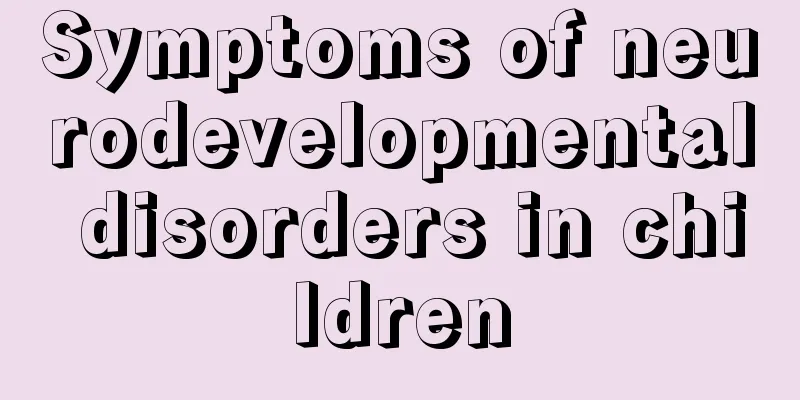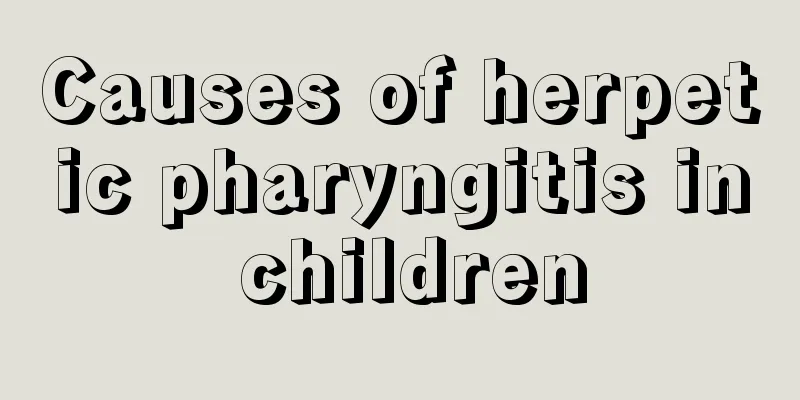Symptoms of neurodevelopmental disorders in children

|
For children, they will always encounter various problems during the process of growth and development. What parents least want to see is their children's neurological developmental problems. However, because the latter is the result of acquired influences, children will still suffer from neurodevelopmental disorders. So, how do parents determine whether their children suffer from neurodevelopmental disorders? This requires everyone to master the main symptoms of this disease. 1. Intellectual disabilities and perceptual disorders: Among all children with brain dysplasia, about 1/4 have normal intelligence, about 1/2 have mild or moderate intellectual disabilities, and about 1/4 have severe intellectual disabilities. Perceptual disorders: Most patients are allergic or unresponsive to stimuli; some experience fixed perception, disordered background and graphics.2. Visual and hearing impairment: Many children with brain dysplasia have myopia or strabismus, among which esotropia is the most common. Hearing loss is more common in athetoid cerebral dysplasia. Children with poor brain development often have difficulty distinguishing the rhythm of sounds. 3. Growth and development disorders: Some children with mild cerebral dysplasia may have basically or nearly normal growth and development, but most children with cerebral dysplasia are shorter than normal children of the same age and their growth and development appear to be lagging behind. 4. Language disorders: Most children with cerebral dysplasia may have causes of cerebral dysplasia. 1. Harmful factors5. Postural disorders: Children with cerebral dysplasia have abnormal body postures, poor posture stability, awkward postures when exercising or at rest, and asymmetry between the left and right sides. In some severe cases, the head is often not in an upright central position like that of normal children, but tends to lean to one side, or sway left and right, front and back. 6. Epilepsy: About 39%-50% of children with cerebral dysplasia suffer from epilepsy due to fixed lesions in the brain. The incidence of epilepsy is particularly high in children with severe intellectual disability. 7. Movement disorders: Children with cerebral dysplasia have lower motor skills than normal children of the same age and poor motor self-control. In mild cases, the hands and feet are only slightly inflexible or clumsy. In severe cases, the hands cannot grasp things, the feet cannot walk, and some cannot even turn over, sit up, stand, chew and swallow normally. 8. Frequent abnormal performance: Children with cerebral dysplasia have delayed development in intelligence and other related aspects, so they have difficulty concentrating, have fewer conscious reactions to their own behavior, and cannot remember people. In daily life, they tend to be relatively quiet and docile, lacking the vitality typical of children, and will not actively respond to the outside world. They lack interest in the outside world and sometimes show excessive crying and laughing. Children with severe brain dysplasia may even suffer from incontinence, aphasia, and sometimes epilepsy.
Harmful factors during pregnancy, such as: rubella virus, giant nerve factor virus, toxoplasmosis, or high fever, toxemia, hypoxia, shock and other factors affect fetal development; abnormal fetal position during delivery, prolonged labor, severe uterine contractions, umbilical cord knotting or wrapping around the neck, amniotic fluid aspiration, birth trauma, asphyxia and other factors that damage brain nerves can all induce brain maldevelopment. 2. Environmental factors The mother's own environment may have an impact on the fetus. For example, if the mother has diabetes, the fetus will be affected by her internal environment and may develop congenital heart disease or anencephaly. If the mother has hypothyroidism, the fetus may be prone to bone and dental deformities, cryptorchidism, tongue-protruding dementia, thyroid enlargement, etc., which is also a major cause of brain maldevelopment. 3. Nutritional factors Malnutrition in the early stage can shorten the division period of cranial nerve factors, and malnutrition in the late stage can reduce the size of each cranial nerve factor. If there is malnutrition in the early stages, especially in the fetal period, even if nutrition improves after birth, intellectual recovery will still be slow or difficult to recover, leading to poor brain development. These are the three important factors that cause babies to suffer from brain maldevelopment. Dear parents, please do not neglect your babies in your busy work and life. Do not sow the seeds of harm for their future healthy growth, causing yourself to regret and placing a heavy burden on your family. I wish all babies suffering from cerebral dysplasia a speedy recovery. |
<<: Baby's eyes and nose are blue
>>: What are some cough relief recipes for children?
Recommend
Treatment of endotracheal intubation in children
Everyone knows about pediatric endotracheal intub...
How to treat vocal cord nodules in children?
Children's health concerns many people in lif...
Can children drink Xiao Chaihu when they have a fever?
Xiao Chaihu is a relatively common Chinese patent...
What should I do if my baby sweats a lot while sleeping?
The baby's physical health is what parents ca...
Why doesn't the child grow hair?
Any adverse symptoms in the child's body will...
What is the standard height and weight for a 3-year-old girl?
For parents, it must be very gratifying to see th...
What to eat if children are deficient in vitamin D
Although many infants and young children have sup...
The impact of divorce on children
Due to changes in modern concepts, people's v...
What to do if your child has a fever
It is quite common for young children to have fev...
What to do if the child is scratched and broken
Babies are particularly prone to trauma when they...
How to treat sequelae of high fever convulsions in children
Children are still in a period of growth and deve...
How many hours does the baby sleep through the night?
Some babies can sleep through the night when they...
How many days do babies usually receive anti-inflammatory injections?
For babies, there will also be some inflammation ...
The reason why moles grow on children's faces
Having moles on the face is a very common phenome...
Why does my baby like to shake his head when sleeping?
Babies are the flowers of the motherland and the ...









